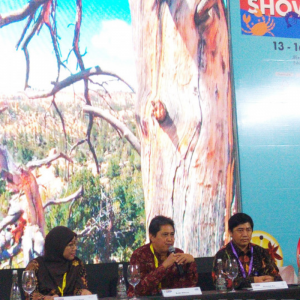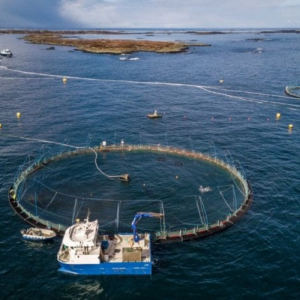
A Primer on Sustainable Feeds: Improving Aquafeeds for Sustainability, Fish Welfare and Human Nutrition
| Thu, 31 Mar 2022 - 14:55
This is the first article in our series on sustainable feeds. This is part of a larger three-part series on sustainable aquaculture intensification in Europe, focused on precision aquaculture, sustainable feeds and circular economy. The work from the GAIN project is funded by the EU Horizon 2020 Fund. Each part in this series takes provides an introductory glance at the three topics, then explains how outputs from the GAIN project are contributing towards it, including the applicability to industry and governance.
Aquaculture feeds, or aquafeeds, and their various formulations impact many aspects of aquaculture, including sustainability, the health and welfare of the animal and the nutritional composition of the final consumer product. As creating better aquafeeds is important for sustainable intensification of aquaculture in Europe, many of the GAIN project outputs focused on improving aquafeeds. This article provides an introduction to some of the issues surrounding aquafeeds.
Sustainability
Aquafeed can contribute to more than 90 percent of aquaculture’s carbon footprint and are hence an important element to focus on for sustainable intensification. Aquafeed ingredients are internationally traded: More than half of aquafeed ingredients for European aquafeeds originated from South America. For example, soybeans are sourced largely from Brazil as a plant-based protein source, and anchovies are largely sourced from Peru’s fisheries for fishmeal and fish oil inclusion.
Aquaculture has been criticized for relying on wild fisheries for fishmeal and fish oil for feeds; however, recent technologies have allowed us to vastly reduce the use of fishmeal and fish oil in feeds. One tactic to reduce the use of fishmeal and fish oil is to transition to alternative proteins and oils. Research has explored plant-based sources (such as soybean), mycoproteins (fungal proteins), insect proteins, algal sources and an array of other options.
Read more: Novel Feed Could Hold Key to Sustainable Aquaculture
However, feeds with no marine ingredients are not necessarily more sustainable. For example, increased demand for soybeans may lead to greater deforestation in the Amazon, which in turn creates damage to biodiversity and climate. We need to properly assess all alternatives that are used to replace fishmeal and fish oil from wild fisheries.
To reduce the pressure on fisheries and increase the efficiency of the fish production system, we have also increased the usage of fish byproducts, like scraps and viscera, as a source of fishmeal and fish oil.
The ‘Fish In, Fish Out’ ratio (FIFO) is used to measure the use of fishmeal and fish oil in feeds. This ratio provides insight into how much fish is required to produce cultured fish. Using these types of ratios shows that, contrary to popular belief, most aquaculture is now a net producer of fish as a result of improvements in efficiency for aquafeed formulations.
Animal Health and Welfare
Replacing ingredients in aquafeeds is not only about sustainability. Aquafeeds must ensure the nutritional needs of the animals as well as reduce the impact of production. Most aquafeeds will require protein, micronutrients, minerals, vitamins, and other additives. Aquafeeds are carefully designed to include these essential micronutrients through balanced ingredients, nutrient fortification, and infusion.
Read more: Sustainable Aquaculture to Feed The World
The quality and palatability (taste) of aquafeeds also greatly impacts on growth and hence, productivity of the farm. Increasing the palatability and digestibility of the feed will help reduce waste and pollution.
Aquafeeds must be designed to meet the nutritional needs of the fish, and each species will have different nutritional requirements. For example, freshwater species, like carp, can tolerate feed with higher quantities of plant-based ingredients, whereas bream and salmon feed must contain higher levels of fishmeal and fish oil to ensure the health of the salmon as well as provide consumers with nutrients like omega-3 fatty oils. Bream and salmon have much higher protein requirements than carp or catfish. Nutritional needs also change throughout the lifecycle of the fish.
Nutritional Value for Consumers
We should never forget that we’re farming fish for someone to eat. We must ensure the product is both safe and nutritious. Aquafeed formulation can affect the nutritional benefits of fish consumption for the consumer.
For fish, the mantra “you are what you eat” is true: aquatic feeds alter the nutritional composition of the fish itself, affecting the nutritional value of that fish to human consumers. For example, salmon fed diets with higher levels of plant-based oils, like soybean oil, have lower levels of omega-3 fatty acids.
Source: Global Seafood Alliance






















